An itinerary to discover the cultural, naturalistic and gastronomic beauties of the two Campanian islands
The islands of Ischia and Procida are located in the Gulf of Naples. Here you can enjoy moments of discovery and adventure, alternating with moments of relaxation and taste. Their peculiarity is that they combine mountain and sea. Thanks to their natural conformation, they are suitable for unique trekkings and beautiful boat trips at the same time.
The culture of the area is rich in history and also passes through the local culinary tradition. Interesting are the stories that revolve around Ischia and Procida, both related to historical events and legends.
What to see on the island of Ischia
Aragonese Castle
The Aragonese Castle of Ischia is undoubtedly the most famous postcard of the island. It is located at the end of the characteristic village of Ischia Ponte, connected to the mainland by a stone isthmus made by Alfonso V of Aragon.
The view is breathtaking, as well as very beautiful are the remains of the Cathedral of the Assumption, the church of the Immaculate Conception and the cemetery of the Clarisse nuns. We recommend an evening visit, for a suggestive sunset with the sun going down behind Mount Epomeo.
In the characteristic village below there are many restaurants that offer the dishes of the rich typical cuisine of Ischia.
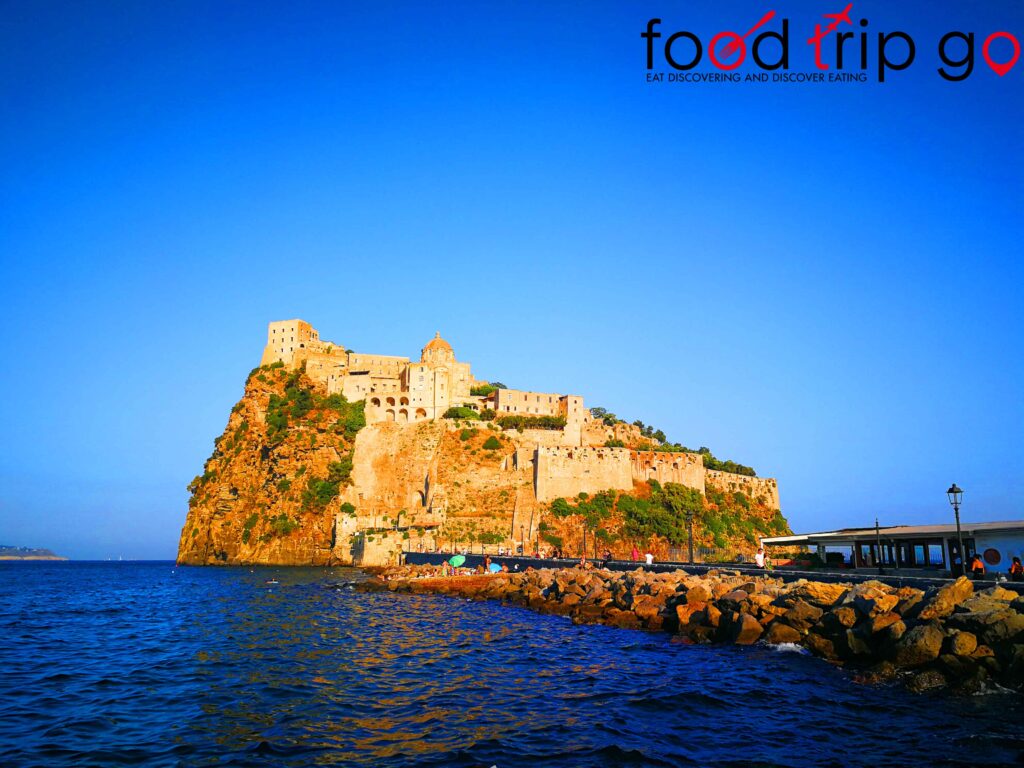
Lacco Ameno and Fungo beach
Lacco Ameno was founded by the Greeks around 770 B.C. and is considered the most ancient western polis. It is interesting to visit the characteristic village and the Fungo beach, known for its particular mushroom-shaped rock.
Here there is also the Archaeological Museum of Pithecusae, which houses the Cup of Nestor, the most ancient poetic fragment in Greek language.
La Mortella gardens
Giardini la Mortella is located in Forio and it is on several levels, housing Mediterranean and tropical plants. It is managed by the Foundation named after William Walton.
La Mortella is not only a botanical garden. Inside, classical and chamber music concerts are held. From here, the view of the coast of Forio is wonderful.
Forio and Soccorso church
Forio is a small village characterized by Saracen alleys. The church of Soccorso is located overlooking the sea and very close to the historical center. It is a Mediterranean church, with very simple lines, without great works of art. The scenery in which it is inserted is really unique.
The churchyard all around is also marvelous, with the view of the sea and the infinite sunsets of the western side of the island. From here you can also see the lighthouse.
Belvedere di Serrara and Mount Epomeo
The Belvedere of Serrara is a beautiful panoramic point from which to see Borgo Sant’Angelo from above. From here it is possible to start a trekking on Mount Epomeo.
The top of Mount Epomeo is 789 meters above sea level and is the highest panoramic point of the island of Ischia. The ascent of Mount Epomeo is an experience that you can safely do all year round and you need hiking shoes for the slippery ground.
At the top there is the ancient hermitage of San Nicola, a small Augustinian convent entirely carved into the green tuff. Enchanting the sunset from the top and the panorama of the whole island.
Pizzi Bianchi
With a trek of about two hours, you can visit the Pizzi Bianchi of Ischia, white rocks that have taken special shapes to the wind. The path is exciting and all downhill.
You need trekking shoes for the slippery ground, helmet for the stones that can fall from some walls, sticks and trained legs. In some places there are ropes to help you not to slip. At the end of the path you arrive at Cavascura Terme and Maronti beach.
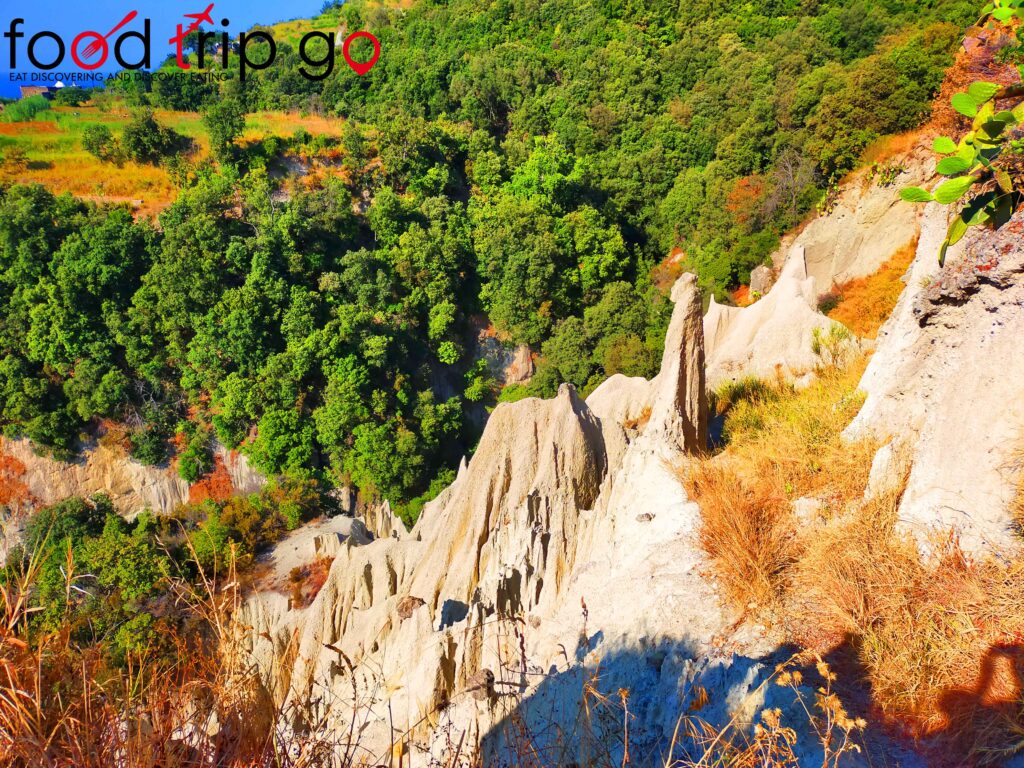
Fonte di Nitrodi and Cavascura Baths
The Fonti di Nitrodi are the most ancient thermal spring in the world. They were already known by the first Greek colonists of Southern Italy who dedicated them to Apollo and the Nitrodi Nymphs.
The Baths of Cavascura, built by the Romans, are a hydrological basin in its natural state dug into the stone of a valley that still retains its caves and its small waterfalls. From the side of a hill rises abundant thermal water that feeds the garden spa of Aphrodite.
Fumarole di Maronti
The Fumarole of Maronti are located between the village of Sant’Angelo and the beach of Maronti. In this stretch of beach, the subsoil emanates a great heat up to 100 ° C. The Romans used this hot sand to make sandblasting and cure the body.
Another ancient use was for food. In fact, the sand at this temperature is like a natural oven. We recommend the experience of tasting a chicken cooked in the sand of the fumaroles, accompanied by the typical Ischian wine with peach, the waves of the sea at night and the starry sky.
Borgo Sant’Angelo
Borgo Sant’Angelo is a large rock connected to the rest of the island through a very thin isthmus of land, which extends into the sea with a strip of dark sand, revealing the volcanic nature of the territory. The houses of the village are still of different colors, as the fishermen used to paint them in order to distinguish them from the sea.
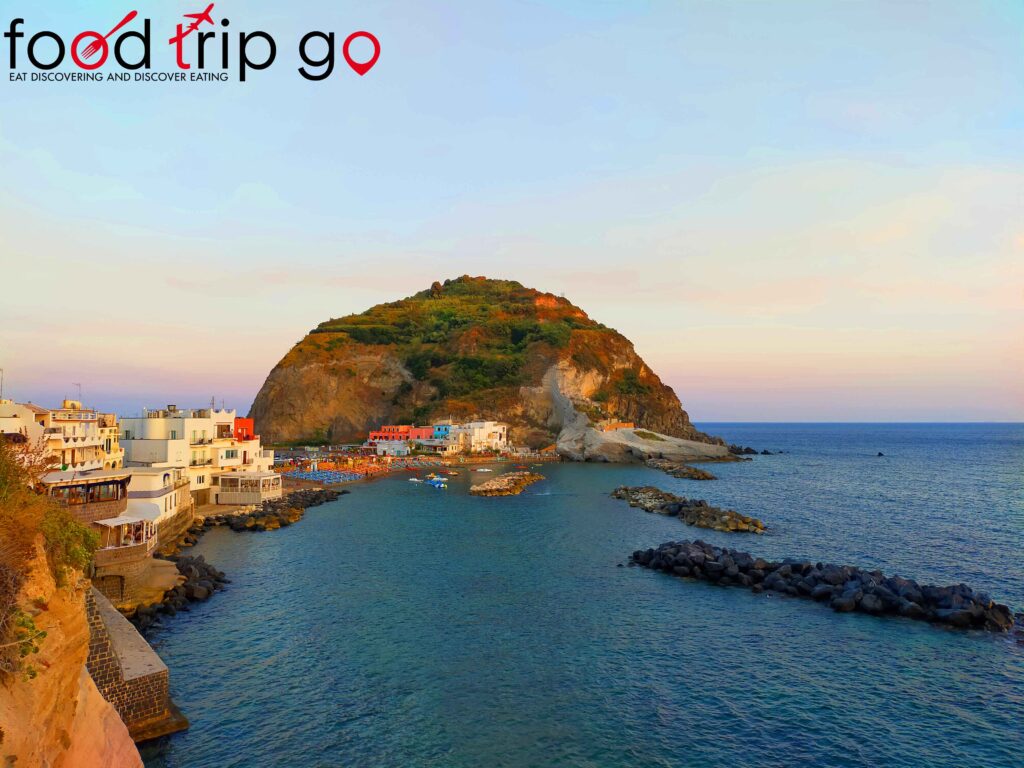
Sorgeto Bay
This small rocky inlet, famous for its hot sulphurous water springs, is located in Panza, a hamlet of the municipality of Forio. Here it is possible in one side of the bay to bathe in the natural thermal water. To reach this place there are more than two hundred steps. The beach is very small and made of stones, but the water is very clear and the cliffs are spectacular.
The beaches of Ischia and the Grotta Verde
Besides the particular Bay of Sorgeto, Ischia has many sandy beaches such as Chiaia, Maronti, Citara and San Montano. The beach of Sant’Angelo is located just below the rocks of the homonymous village.
Reachable only by boat and not to be missed are the beach of Varulo and the Grotta Verde. It is a natural cavity where you can enter only by swimming. The seabed is low and the sand is soft and white. The reflection of sunlight through the water creates special lighting effects and colors the atmosphere of the green cave, hence the name.
What to see on the island of Procida
Following the itinerary of about 7km that we propose, it is possible to visit the small Procida in its most characteristic and suggestive points.
Palazzo D’Avalos and Monastero Santa Margherita
Palazzo d’Avalos was built in the sixteenth century at the behest of the cardinal of the same name. The palace in the eighteenth century was confiscated by the Bourbon rulers to become a royal hunting site. In the years of the second world war it became a state prison.
The Monastery Santa Margherita also dates back to 1500, when the Dominican monks moved because of the frequent Saracen raids. From this terrace you can admire the Corricella from above.
La Corricella and Santa Maria delle Grazie
Corricella is the most ancient and characteristic sea village of Procida. It is arranged as an amphitheater on the sea and is characterized by intertwined arches, domes, windows, stairways and colorful facades.
The buildings are all different colors, so that the fishermen could recognize their home from the sea. Overlooking the Corricella is Santa Maria delle Grazie. From here you can enjoy a breathtaking view of the sea, the Corricella and Terra Murata.
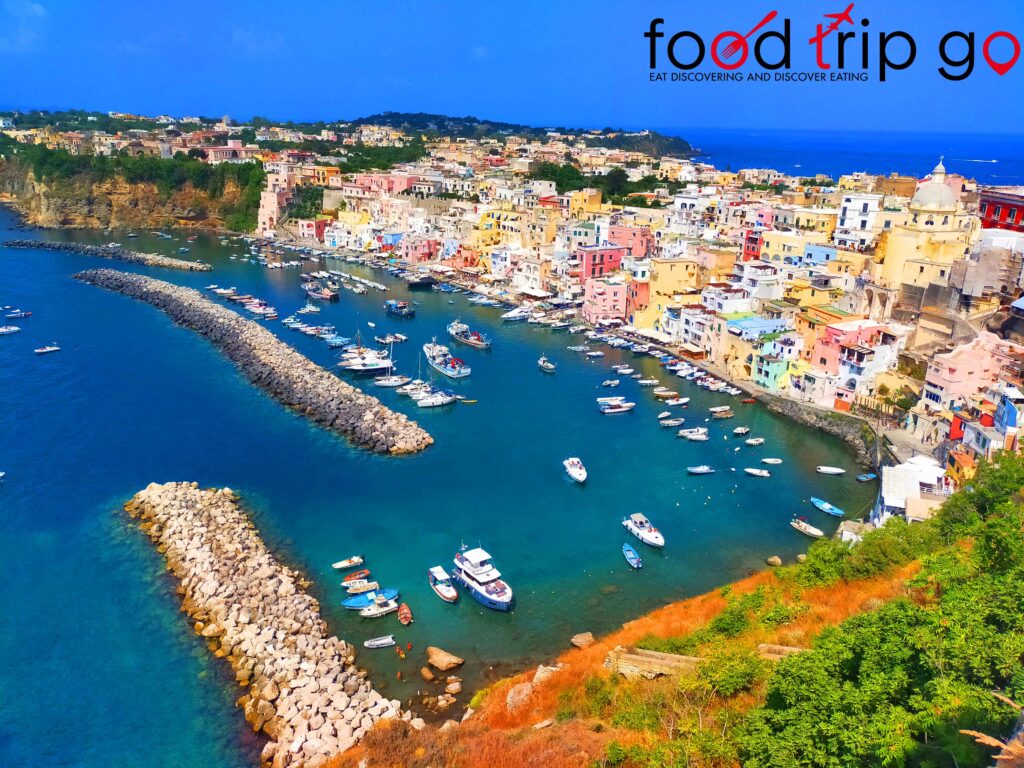
Terra Murata, la Chiaiolella and Vivara
After a slight climb, you reach Terra Murata, the highest point of the island of Procida from which you can admire the Corricella and the Gulf of Naples. Chiaiolella is the tourist port of Procida and not far away there is Vivara, a small island connected by a bridge which is a natural reserve.
The typical dishes of Ischian cuisine
Ischia combines sea and land and even the local cuisine is reflected in this contrast. Typical are the pasta with mussels and beans, the chicken alla fumarola, cooked in the hot sand, and the rabbit all’Ischitana. With the sauce of the rabbit is also seasoned the pasta. Although it is an island, the typical dish is meat and the rabbit is raised in the pit, to keep the meat tastier.
A typical dish of Procida’s cooking is instead lemon salad. As for wines, Biancolella is the icon of the island and recalls the aromas of citrus fruits and fruit, to accompany both meat and fish dishes typical of Ischia’s culinary tradition.

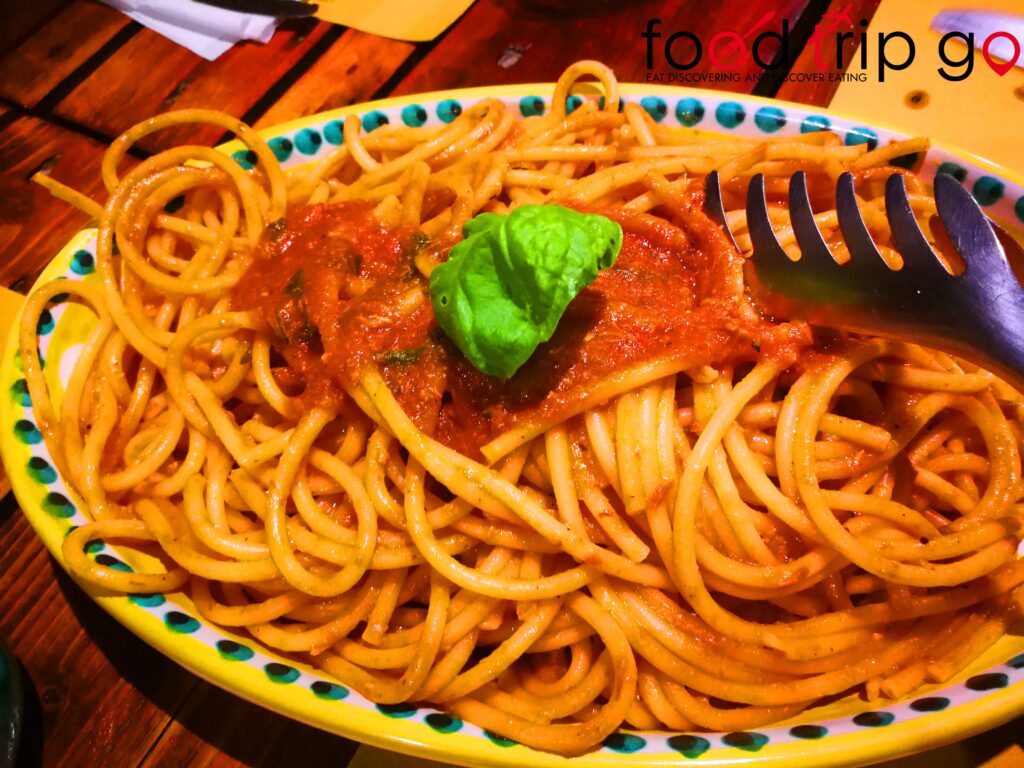
Ischia and Procida, between sea and mountains
The islands of Ischia and Procida combine the Mediterranean charm of the sea with the mountains. This apparent contrast is also transmitted to the traditional local cuisine, which combines typical meat dishes such as the famous rabbit all’ischitana with the flavors and scents of the Mediterranean. Thanks to this variety, these islands have a lot to offer: trekking in fantastic places with breathtaking views and sea life in bays and caves with unique colors.
Discover other itineraries in Campania
ISCHIA AND PROCIDA: WHERE SEA AND MOUNTAIN COME TOGETHER
NAPLES: CITY OF PIZZA, COFFEE, BABA, VESUVIUS AND MUCH, MUCH MORE!